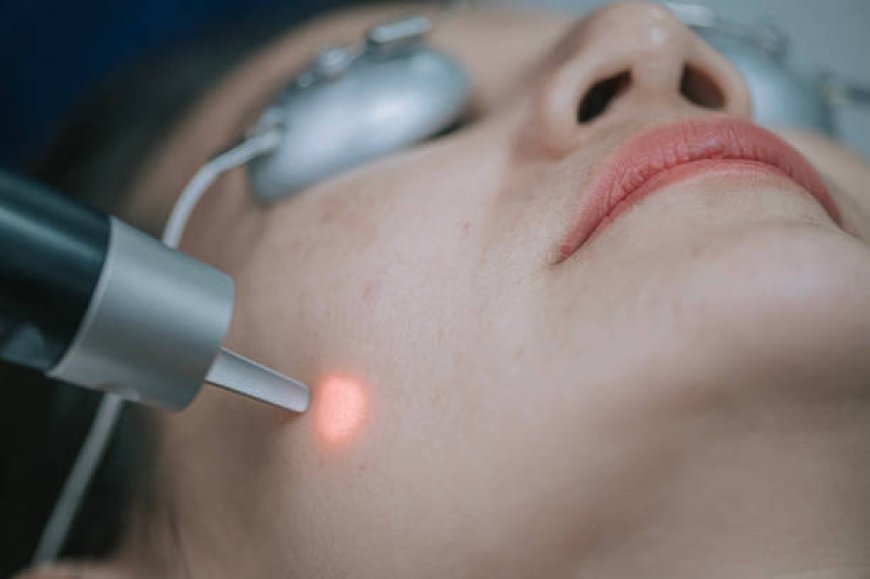Hemangioma Relief in Abu Dhabi

Hemangiomas are benign tumors formed by an abnormal buildup of blood vessels, commonly appearing as red or purple marks on the skin. While often harmless, these growths can vary in size, location, and potential complications, necessitating tailored treatment strategies. Hemangioma treatment in Abu Dhabi, advanced medical options are available to effectively manage hemangiomas, focusing on minimizing symptoms and optimizing cosmetic outcomes.
Understanding Hemangiomas
A hemangioma is a vascular growth that typically appears shortly after birth or during infancy. They can range from small, superficial marks to larger, raised nodules, depending on their location and depth within the skin or tissues.
Types of Hemangiomas
-
Infantile Hemangiomas: These are the most common type, usually appearing within the first few weeks to months of life. They often grow rapidly and may regress spontaneously over time, though some may require intervention if they pose risks to vital structures or cause significant cosmetic concerns.
-
Congenital Hemangiomas: Present at birth, these growths may remain stable or slowly regress without treatment. Monitoring is essential to assess any changes in size or appearance.
Symptoms and Diagnosis
Symptoms of hemangiomas vary depending on their size, location, and depth:
- Skin Discoloration: Red, purple, or blue marks on the skin's surface.
- Raised Nodules: Bumps or lumps that may be warm to the touch.
- Potential Complications: Ulceration, bleeding, or interference with normal bodily functions, particularly if located near critical areas like the eyes, mouth, or airways.
Diagnosis
Diagnosing hemangiomas typically involves a clinical examination by a dermatologist or pediatric specialist. Imaging studies such as ultrasound or MRI may be recommended to evaluate deeper or internal lesions, ensuring an accurate assessment of the hemangioma's extent and potential impact.
Treatment Strategies in Abu Dhabi
Managing hemangiomas in Abu Dhabi involves a multidisciplinary approach aimed at reducing symptoms, minimizing complications, and improving cosmetic outcomes. Treatment strategies are tailored to each patient based on factors such as age, health status, and the specific characteristics of the hemangioma.
1. Watchful Waiting
For small, asymptomatic hemangiomas, a period of observation without immediate intervention may be recommended. Many infantile hemangiomas undergo spontaneous regression without the need for medical treatment.
2. Medical Therapies
-
Oral Medications: Beta-blockers like propranolol are commonly prescribed to inhibit the growth of infantile hemangiomas by reducing blood flow to the tumor. This treatment is effective for rapidly growing or large hemangiomas that may pose risks to vital structures.
-
Topical Treatments: Corticosteroid creams or ointments may be applied to superficial hemangiomas to reduce inflammation and promote shrinkage.
3. Advanced Procedures
-
Laser Therapy: Laser treatment targets and destroys the blood vessels within the hemangioma, leading to shrinkage and improved cosmetic appearance. This approach is particularly effective for smaller, more superficial hemangiomas.
-
Surgical Excision: In cases where hemangiomas are large, deep-seated, or causing significant functional impairment, surgical removal may be considered. This approach aims to completely remove the hemangioma and may involve reconstructive techniques to optimize function and minimize scarring.
Frequently Asked Questions (FAQs)
What are the risks associated with hemangioma treatment?
Answer: Treatment risks can include scarring, infection, or, in rare cases, damage to surrounding tissues or nerves. Your healthcare provider will discuss these risks with you before proceeding with any treatment.
How long does hemangioma treatment take?
Answer: Treatment duration varies depending on the size, location, and chosen therapy. Oral medications may require several months of administration, while laser therapy sessions may be completed within a few weeks.
Can hemangiomas recur after treatment?
Answer: While treatments can be highly effective in reducing or eliminating hemangiomas, there is a small risk of recurrence, particularly with certain types of therapies. Regular follow-up appointments with your healthcare provider are essential to monitor for any signs of recurrence or new growth.
Conclusion
Effective management of hemangiomas in Abu Dhabi requires a personalized approach that considers the unique characteristics of the growth and the patient's overall health. Early diagnosis and intervention can significantly improve outcomes, reducing complications and optimizing cosmetic results. Whether seeking treatment for yourself or a loved one, consulting with a qualified dermatologist or pediatric specialist experienced in hemangioma care is essential for developing a comprehensive treatment plan and achieving the best possible outcome.
What's Your Reaction?
 Like
0
Like
0
 Dislike
0
Dislike
0
 Love
0
Love
0
 Funny
0
Funny
0
 Angry
0
Angry
0
 Sad
0
Sad
0
 Wow
0
Wow
0













































